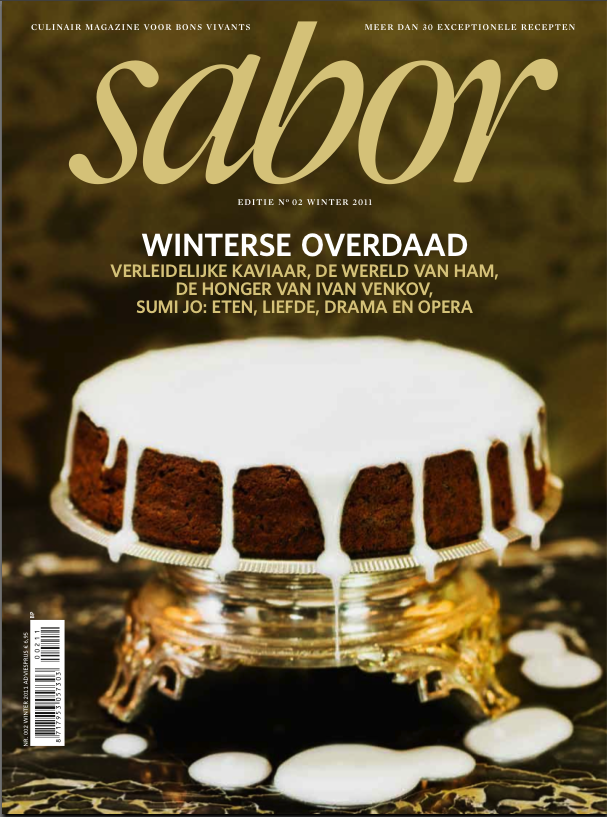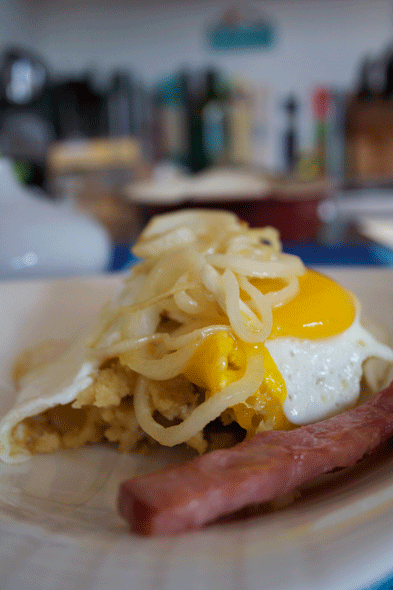Caribbean
Habichuelas con Dulce: Caribbean Sweetness That’s Here to Stay03.15.16
Habichuelas con dulce was the dish that had my heart when I left home almost two decades ago. And then I found it — or rather it found me. Right smack in the middle of Washington Heights, from a street vendor who sold it in plastic containers for a dollar. It was an honest way to flee the hardness of the city, if only for a few spoonfuls, and travel to a place where breezes blew salty and flowers shone bright. Right around the beginning of Lent this year, I thought of it again. My Dominican tribe was ready to indulge and secretly fulfill my wish.
Within the tribe was Argentina Diaz, a self-taught cook who began tinkering with the stove by the time she was eight years old. Born in Santiago, Dominican Republic in the late 1950s, she was part of the Dominican exodus who left the island and made its way to New York City after Trujillo’s dictatorship fell in the early 1960s. Her mother ran restaurants in Queens and she learned the secrets of Caribbean creole cooking early on. Today, after a life-long career in finance and still in her 50s, she’s retired and living in a light-filled two-bedroom apartment she shares with a roommate on the second story of a single family home in Ozone Park, Queens.
Eating my way through Fajardo, Puerto Rico06.16.13
What started out as a girls’ trip to the Caribbean ended up being an excellent opportunity to check out the food scene in the eastern coastal town of Fajardo, Puerto Rico. We sailed a catamaran and snorkeled in clear blue water, spotted a baby lemon shark swimming on the shore, and fell asleep to the lullaby of the native coqui frog. However, we also tasted Puerto Rican mofongo and alcapurrias, and talked to Brooklyn transplants Chef Kevin Roth and his wife Idalia about their five-year-old Nuyorican restaurant La Estacion. Stay tuned for my upcoming story in The Latin Kitchen about how this couple is turning Puerto Rican food on its head. In the meantime, these are some outtakes from the trip.
Latinfoodie Goes to Europe12.12.11
Hello Friends, I’m thrilled to share with you my first international byline! I have just been published in Sabor, a food magazine distributed in the Netherlands. For their Winter 2011 issue, I had the honor of covering Latin American tamales, prepared throughout the Caribbean and Venezuela during the Holidays. The story has been translated to Dutch, but here’s the original story in English. Hope it’s what you need to kick off a wonderful and blessed Holiday season! ¡Felices Fiestas! more »
Magnificent Mangú03.09.11
For me, weekends are for sleeping in, seeing friends, catching up on life and most importantly, indulging in the luxury of time. Creating elaborate breakfast dishes is such a treat that I sometimes enjoy the process more than the actual tasting (ahem, NOT). Mangú con huevo, the quintessential breakfast dish from the Dominican Republic is the perfect case in point. Mangú, or mashed green plantains, is made by boiling green plantains and crushing them with olive oil and butter until they’re soft and creamy. In the D.R., mangú is typically served with fried cheese, fried salami (a local sausage), sunny side eggs and avocado. The end result is a feast of textures: the smoothness of the egg yolk balances the density of the plantain, the cheese and salami add a salty crisp and the avocado a cool refuge for your taste buds.
As I prepared this beloved breakfast dish on a recent Saturday, I was reminded of a drive I took with the family through the Dominican countryside, as we made our way to the mountains of Jarabacoa. The morning was rainy and fresh, and we stopped at the breezy roadside restaurant Típico Bonao which lures locals from all over the country to start the day with this dish and an aromatic cup of Dominican coffee. Mangú con huevo brings back this Dominican love, and nourishes the spirit as well as the belly.
Mangú con Huevo Serves 2
2 green plantains
olive oil
butter
salt
red onion
white vinegar
4 eggs
breakfast ham
“queso de hoja” cheese (optional)
avocado (optional)
Chop the ends off each plantain. Make slits throughout the plantain, running the tip of your knife through the length of the fruit. Chop the plantains into 1″ chunks. Fill a pot with water and boil the plantain chunks for about 45 minutes.
While the plantains cook, thinly slice the onion and place the slivers in a bowl with 1 tablespoons of white vinegar, olive oil and salt. Stir these around until the onion gets covered and let it rest.
Check if the plantains are ready by piercing them with a fork. They should be tender when cooked. They will also be easy to peel. Remove their skin and place the chunks in a deep bowl. Pour a 1/4 cup of cooking liquid, a drizzle of olive oil, 1 tablespoon of butter and salt and start to mash with a masher or fork. Work through the pieces, alternating with the liquid, olive oil and butter, until you achieve your desired consistency.
Working quickly, pan fry the onions in a drizzle of olive oil and pour over the mangú. Cover with aluminum foil to keep warm. Next toss the ham, and fry the eggs sunny side up, on a non-stick pan. You can also deep fry the queso de hoja for an authentic latin kick and slice up some avocados on the side. Serve the mangú with the onions, eggs and ham. Eat immediately!
Turtle Stew and Chicharrón08.06.09
At first glance, you may think this pairing comes straight out of Bizarre Foods. However, at Luz Restaurant in the Cayman Islands, these two dishes are bestsellers on the menu. Staples of the Caymanian and Honduran kitchens come together in this casual Georgetown eatery which serves traditional Caymanian fare like turtle stew and stewed conch and a list of Honduran delicacies like garnaches (corn tortillas topped with cheese, cabbage and beans), chicharrón con yuca(fried pork rinds with yucca), and carne asada (roast beef). On my last trip to this sunny sanctuary, I learned about the important Honduran presence in the Caymans and that people from the Bay Islands of Honduras have been crossing the Caribbean Sea and settling in the Cayman Islands for years.
It started in the 40’s and 50’s, when local Caymanians traveled to the English-speaking Bay Islands by catboats for food and resources limited by the arid local soil. Located about 145 nautical miles away, they were easily accessible. The Bay Islands’ history includes many disputes between Spain and England during colonial times, so much so that English is mostly spoken here despite the fact that Spanish is the official language of Honduras.
To Caymanians, Spanish is synonimous with people from Honduras. It’s incredible to think how Latin America is alive in the most unexpected of places.





Food For Thought